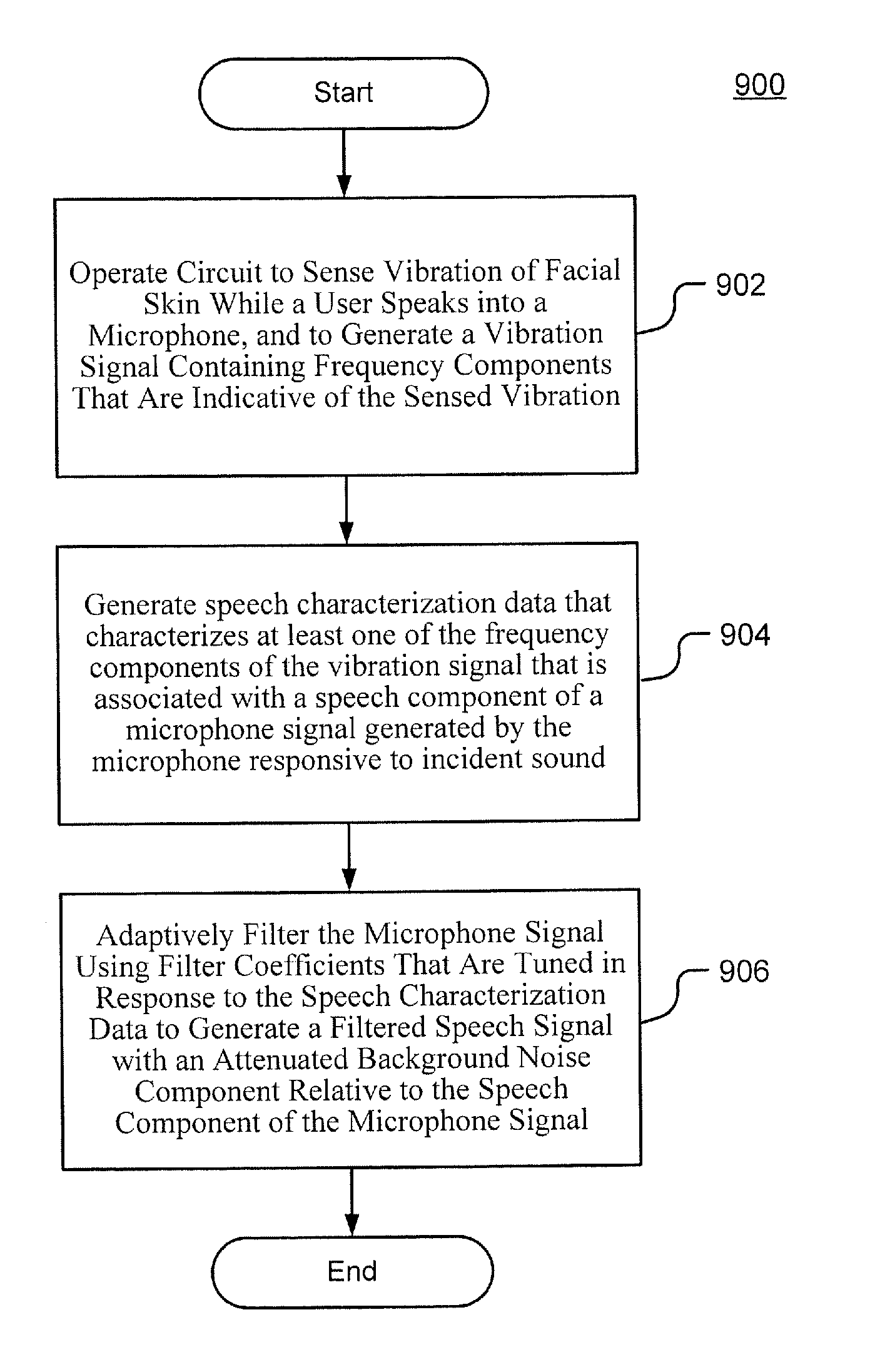Adaptively filtering a microphone signal responsive to vibration sensed in a user's face while speaking
a technology of microphone signal and vibration, applied in the field of filtering microphone signal, can solve the problems of numerous undesirable effects of background noise, obscure or mask background noise, etc., and achieve the effect of improving the conduction of higher frequency components
- Summary
- Abstract
- Description
- Claims
- Application Information
AI Technical Summary
Benefits of technology
Problems solved by technology
Method used
Image
Examples
Embodiment Construction
[0035]Various embodiments of the present invention will now be described more fully hereinafter with reference to the accompanying drawings. However, this invention should not be construed as limited to the embodiments set forth herein. Rather, these embodiments are provided so that this disclosure will be thorough and complete, and will convey the scope of the invention to those skilled in the art.
[0036]It will be understood that, as used herein, the term “comprising” or “comprises” is open-ended, and includes one or more stated elements, steps and / or functions without precluding one or more unstated elements, steps and / or functions. As used herein, the singular forms “a”, “an” and “the” are intended to include the plural forms as well, unless the context clearly indicates otherwise. The term “and / or” and “ / ” includes any and all combinations of one or more of the associated listed items. In the drawings, the size and relative sizes of regions may be exaggerated for clarity. Like n...
PUM
 Login to View More
Login to View More Abstract
Description
Claims
Application Information
 Login to View More
Login to View More - R&D
- Intellectual Property
- Life Sciences
- Materials
- Tech Scout
- Unparalleled Data Quality
- Higher Quality Content
- 60% Fewer Hallucinations
Browse by: Latest US Patents, China's latest patents, Technical Efficacy Thesaurus, Application Domain, Technology Topic, Popular Technical Reports.
© 2025 PatSnap. All rights reserved.Legal|Privacy policy|Modern Slavery Act Transparency Statement|Sitemap|About US| Contact US: help@patsnap.com



